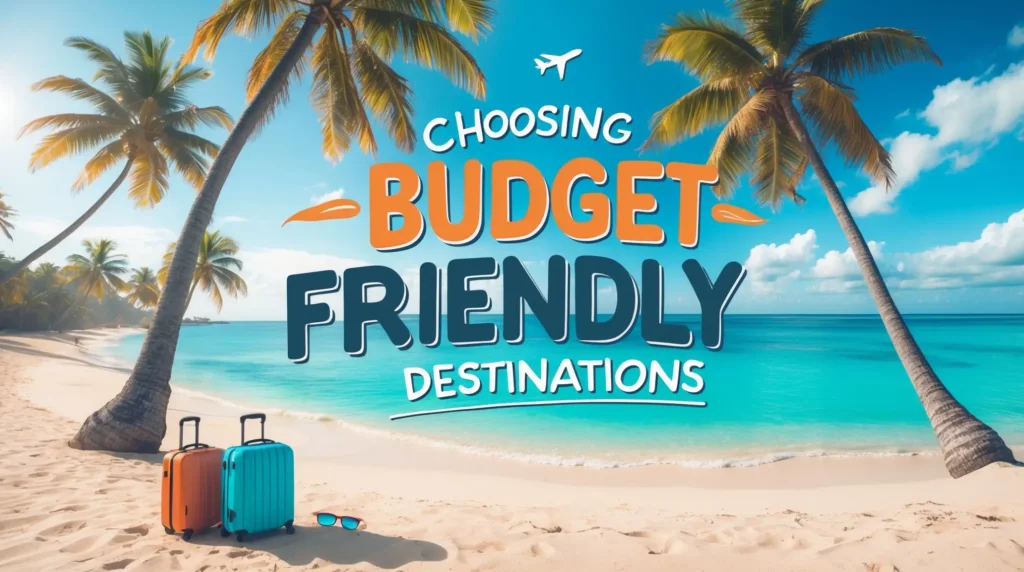Introduction
Have you ever dreamed of exploring Europe without spending a fortune? You’re not alone. The idea of strolling through Paris, hiking the Swiss Alps, or sipping coffee in a Roman piazza often feels out of reach for many. But here’s the truth—traveling across Europe doesn’t have to drain your bank account. With smart planning, the right tools, and a flexible mindset, you can make your European adventure both unforgettable and affordable.
First things first—let’s bust a common myth: Europe is only for the wealthy. Nope. While some cities like London or Zurich can be pricey, others like Budapest, Kraków, or Lisbon offer rich cultural experiences at a fraction of the cost. In fact, some budget travelers spend less in a month in Europe than many tourists spend in a week.
Whether you’re a student, a solo wanderer, or a family looking to make the most of your savings, there’s a way to do Europe that fits your wallet. This article is packed with real, actionable tips to help you see more, spend less, and experience Europe like a seasoned traveler.
So grab a cup of coffee, and let’s dive into your ultimate guide to traveling Europe on a budget.
Planning Ahead: The Foundation of Budget Travel
Setting a Realistic Budget
Before booking anything, the key to traveling Europe on a budget starts with—you guessed it—a budget. But not just any budget. We’re talking about a well-researched, realistic plan that aligns with your goals and comfort level.
Start by calculating your total available funds. Is it $1,000? $3,000? More? Now break it down. Divide that amount by the number of days you plan to travel. That’s your daily budget. For example, if you have $3,000 for 30 days, you’re working with around $100 a day.
But don’t stop there.
Factor in:
- Accommodation
- Food & drinks
- Transportation
- Activities & attractions
- Emergency funds
Use budget travel blogs, Reddit threads, and YouTube vlogs to get estimates for each city or country you want to visit. Apps like Budget Your Trip or Numbeo offer real-time cost averages by location. Remember: €50 goes a lot further in Albania than it does in Amsterdam.
Also, budget for surprise costs—missed trains, spontaneous detours, or gear replacements. Having a cushion (at least 10-15% of your total) can prevent a minor hiccup from turning into a financial disaster.
Choosing Budget-Friendly Destinations

Image Credit: Leonardo
Europe is a tapestry of cultures, histories, and price tags. The biggest money-saver? Picking the right countries to visit. Western Europe—France, Italy, Germany, etc.—is gorgeous but often pricey. On the flip side, Eastern Europe offers similar charms with significantly lower costs.
Budget-friendly countries to consider:
- Poland – Cheap eats, affordable hostels, and rich WWII history.
- Romania – Castles, mountains, and beautiful cities like Brasov or Cluj.
- Portugal – Western Europe feel, Eastern Europe prices.
- Hungary – Budapest is a dream destination with thermal spas and river views.
- Bulgaria – One of the cheapest EU countries to travel in.
Also, consider lesser-known regions in expensive countries. Instead of Paris, try Lyon. Skip Venice and head to Bologna. Looking for a beach? Try Croatia’s Adriatic coast over the French Riviera.
Mix and match. Spend two weeks in cheap countries and a few days in expensive ones. Your wallet will thank you.
Best Time to Travel to Save Money
Timing is everything—especially when it comes to saving cash in Europe.
Shoulder seasons (April to mid-June and September to October) are your best friends. Why? Fewer crowds, lower prices, and generally good weather. Flights and accommodations are often significantly cheaper compared to the summer months.
Avoid peak travel seasons like:
- Summer (June–August) – Overpriced flights, packed tourist spots.
- Christmas & New Year holidays – Expensive cities, limited hostel availability.
Want to save the most? Consider traveling in winter. Countries like Austria, Germany, and Switzerland turn into winter wonderlands. Bonus: cozy Christmas markets, fewer tourists, and major discounts on lodging.
Also, traveling mid-week rather than on weekends can score you better rates on transport and accommodation. Flight prices especially drop on Tuesdays and Wednesdays.
Affordable Transportation Options
Budget Airlines and Booking Hacks

Image Credit: Canva
Flying between countries in Europe? Don’t automatically go for the big names. Budget airlines like Ryanair, EasyJet, and Wizz Air often offer flights as low as $10 if booked in advance.
But beware—their prices come with catches. Baggage restrictions are strict, and extras like seat selection, airport check-in, and even water onboard come with fees.
Tips to fly cheap:
- Use flight aggregators like Expedia, Aviasales, Trip.com, Skyscanner, Google Flights, or Hopper.
- Always search in incognito mode or clear cookies to avoid price spikes.
- Book at least 4-6 weeks in advance for the best deals.
- Check secondary airports—they often have cheaper flights.
For example, flying into Beauvais instead of Paris Charles de Gaulle might save you $50, even with the added cost of a bus transfer.
Eurail Pass vs. Individual Tickets
Trains are the romantic heart of Europe. But are they cheap? Not always.
The Eurail Pass gives unlimited train travel in 33 countries. Sounds amazing, right? It can be—if you’re traveling frequently. For occasional use, buying individual tickets in advance (especially regional or local trains) is often cheaper.
Eurail pros:
- Flexible and convenient
- Great for spontaneous travelers
- One payment, many routes
Eurail cons:
- Expensive upfront
- Not all high-speed trains are included
- Seat reservations may still cost extra
When to skip the pass:
- If you’re visiting only 2-3 countries
- If your route includes mostly buses or flights
For budgeters, mixing buses, occasional trains, and flights tends to be the cheapest option.
Cheap Accommodation Strategies

Image Credit: Leonardo
Hostels, Guesthouses, and Couchsurfing
One of the biggest expenses when traveling is accommodation, but don’t worry—Europe offers plenty of wallet-friendly options that don’t require sacrificing comfort or safety.
Hostels are a classic budget travel choice, especially for younger travelers or solo adventurers. They’re not just dorm beds anymore—many hostels now offer private rooms, free breakfasts, kitchens, and even coworking spaces. Use platforms like Hostelworld and Booking.com to filter by price, rating, and amenities. Always check reviews and avoid hostels with low security or cleanliness scores.
Guesthouses are another excellent option, especially in Eastern Europe and the Balkans. These are typically small family-run accommodations, offering a cozy stay with a local feel. You often get more privacy than a hostel for a price that’s still budget-friendly.
Couchsurfing is for the more adventurous traveler. The idea is simple: locals open their homes to travelers for free. You save money and get an insider’s guide to the city. But use caution—only stay with hosts who have verified identities and multiple positive reviews. Always communicate clearly, set expectations, and have a backup plan just in case.
Also, keep in mind some hostels offer work-for-accommodation programs where you can volunteer a few hours a day in exchange for a free bed and sometimes even meals. It’s a great way to save money and meet people.
Budget Hotels and Airbnb Tips
If you’re traveling as a couple or in a small group, budget hotels or Airbnb apartments might be more cost-effective than hostels.
Budget hotel chains like B&B Hotels, Ibis Budget, or Motel One often have double rooms for less than $60 a night, especially in less touristy cities. They’re clean, simple, and reliable.
With Airbnb, you can find a private room or entire apartment for a fraction of the price of a hotel—especially in Eastern Europe, Portugal, or Greece. To save even more, look for:
- Weekly or monthly discounts
- Superhost listings with many reviews
- Places with a kitchen to cook your meals
Also, consider staying just outside the city center. You’ll get better prices and a more local experience. Just make sure the place is close to public transport.
Pro tip: Always check the final price with cleaning and service fees—those can turn a “cheap” Airbnb into an overpriced one fast.
Sleeping Overnight in Transit
Want to kill two birds with one stone? Overnight trains and buses let you travel and sleep at the same time—saving both money and daylight.
Overnight trains often come with bunk-style sleeper cabins or reclining seats. Routes like Paris to Venice, Berlin to Budapest, or Vienna to Zurich are popular choices. You’ll pay more for a private cabin, but even a reclining seat saves a night in a hotel.
Buses like FlixBus or Eurolines offer overnight routes at rock-bottom prices. You won’t get the same comfort as a train sleeper car, but if you can sleep sitting up, it’s a major money saver.
Just remember to:
- Pack a travel pillow and blanket
- Keep valuables on you
- Arrive early to get a good seat
This hack works best for medium-length trips (6–10 hours). Too short, and you won’t get much sleep. Too long, and you might be miserable by arrival.
Eating and Drinking on a Budget
Cooking Your Own Meals
Eating out in Europe can burn through your budget fast. But cooking? That’s where you can save serious cash—plus it’s a great way to experience local life.
Most hostels and many Airbnb listings come with access to a kitchen, so make use of it. Head to local supermarkets, farmer’s markets, or discount chains like Lidl and Aldi to stock up on affordable, local ingredients.
You can cook pasta in Italy for a few euros or make a simple salad and sandwich for lunch. Buy a reusable water bottle to avoid buying drinks constantly, and grab fruit or snacks for the day’s sightseeing.
Not only will this cut down your daily food expenses (from $30+ to around $10), but you also get the freedom to eat on your schedule. And yes, it’s totally okay to have cereal for dinner now and then.
Affordable Eats: Street Food, Bakeries, and Local Diners

Image Credit: TripAdvisor
Cooking every meal isn’t always realistic—sometimes you just want to taste the local cuisine without breaking the bank. And you can!
Street food and local bakeries are the secret to cheap, authentic meals in many European cities. Think:
- Döner kebabs in Berlin
- Burek in the Balkans
- Tapas in Spain (sometimes even free with a drink!)
- Fresh baguettes or sandwiches in Parisian bakeries
- Currywurst or bratwurst stands in Germany
Also, look for local diners, cantinas, or student cafes, especially near universities. These often serve full meals for under €10. And in Italy, aperitivo hours offer all-you-can-eat snacks with your drink—yes, it’s a thing.
If you’re staying somewhere with breakfast included, take advantage. Some hostels and hotels serve buffet-style breakfasts—grab fruit or a sandwich to take for later.
Avoiding Tourist Traps
Nothing hurts your travel budget more than falling into a tourist trap restaurant. You know the type: menus with photos in five languages, pushy waiters, and prices double the local average.
Here’s how to spot (and avoid) them:
- Walk a few blocks away from major attractions
- Look for restaurants without English menus or touts
- Use apps like Google Maps, TripAdvisor, or TheFork to check ratings and prices
- Ask your hostel or Airbnb host for recommendations
Remember, where locals eat is where you want to eat. It’s usually cheaper, tastier, and a more authentic experience.
Smart Sightseeing: Free and Cheap Attractions
Free Walking Tours and Museums
One of the best ways to explore any European city is by taking a free walking tour. These are tip-based tours offered in nearly every major city—just search “Free Walking Tour + [city name]”. Local guides walk you through the highlights, history, and hidden gems of the city, all for a tip (usually €5–€10).
Many museums and attractions offer free entry days, especially in cultural capitals like London, Paris, and Rome. For example:
- The Louvre is free on the first Sunday of the month
- Museums in London are always free
- Berlin has free museum nights throughout the year
Plan your itinerary around these dates to maximize value.
Also, students under 26 often get reduced or free admission to museums, galleries, and historical sites—just bring a valid student ID.
Nature, Parks, and Beaches
The great outdoors doesn’t charge an entry fee. Europe is full of stunning natural sights, parks, and coastlines that you can explore for free.
In cities, stroll through gorgeous public parks like:
- Parc Güell (free areas) in Barcelona
- Hyde Park in London
- Vondelpark in Amsterdam
Love hiking? Head to the Tatras Mountains in Slovakia, Cinque Terre trails in Italy, or the Black Forest in Germany.
Beach lover? The coast of Croatia, Portugal’s Algarve, and Greece’s islands offer incredible beaches where access is totally free.
Add a picnic, and you’ve got a full day of fun—no ticket required.
City Tourist Cards: Worth It or Not?
Most European cities offer tourist passes that bundle free or discounted admission to attractions, museums, public transport, and even skip-the-line access.
Examples include:
- Paris Pass
- Lisboa Card
- Berlin WelcomeCard
These passes can offer great value, but only if you’re planning to do a lot of sightseeing in a short period. Do the math: list the attractions you want to see, check their individual entry fees, and compare the total to the cost of the pass.
If you’re only visiting a museum or two, it might not be worth it. But if you’re museum-hopping or using public transport a lot, it can pay off quickly.
Money-Saving Travel Tips
Currency Exchange and ATM Fees
Nothing feels worse than losing money before you even spend it. And that’s exactly what happens when you’re not careful with currency exchange or ATM withdrawals.
Avoid exchanging large sums at airport kiosks or tourist centers—they often offer terrible rates and hefty fees. Instead, use local ATMs in the city center or train stations. But even then, make sure you’re using the right card.
Best money-saving strategies:
- Use a debit or credit card with no foreign transaction fees. Cards from banks like Revolut, Wise, Charles Schwab, or N26 are great options for travelers.
- Decline the conversion option when withdrawing cash or paying by card. Always choose to be charged in local currency.
- Avoid ATM machines that aren’t attached to a bank—they often charge outrageous fees.
Also, carry a small stash of backup cash, ideally in euros, especially when traveling through smaller towns or rural areas where card payments may not be accepted.
Travel Insurance on a Budget
Travel insurance might seem like an unnecessary expense, especially if you’re trying to keep costs low. But skipping it can cost you a whole lot more in the long run.
Imagine this: a missed flight, lost luggage, stolen phone, or even a hospital visit abroad. Any of these can ruin your trip and your wallet.
Affordable travel insurance options like SafetyWing, World Nomads, or Heymondo offer coverage for medical emergencies, cancellations, theft, and more—for just a couple of bucks a day.
Here’s what you want to look for:
- Medical coverage (hospital stays, doctor visits)
- Trip cancellations and interruptions
- Theft or loss of belongings
- Emergency evacuation
A good policy not only protects your finances but gives you peace of mind—which is priceless when you’re thousands of miles from home.
Apps and Websites That Save You Money
These days, your smartphone is your best budget travel companion. There’s an app or website for nearly every travel hack.
Top travel tools for saving money:
- Rome2Rio – Compares transport options (trains, buses, flights)
- Omio – Book cheap trains and buses in Europe
- Skyscanner – Find budget flights across Europe
- Google Maps – For walking routes and finding nearby cheap eats
- HappyCow – Best for budget vegan/vegetarian options
- Splitwise – Track shared expenses with friends
- TheFork – Restaurant discounts and deals in major cities
- Hostelworld – Reviews and bookings for affordable hostels
- Couchsurfing – Stay with locals for free
- PackPoint – Helps you pack only what you need
These tools don’t just make your trip smoother—they help you spend less without sacrificing experience.
Traveling Slow: Why Less is More
Benefits of Slow Travel
If you want to really stretch your budget while deepening your travel experience, slow travel is the answer. Instead of racing from city to city, consider staying longer in fewer places.
Why?
- Accommodation gets cheaper. Many hostels, Airbnbs, and guesthouses offer weekly or monthly discounts.
- You get into a local rhythm. Shopping at markets, cooking meals, meeting locals—all of these save money and enrich your trip.
- Less transport = less cost. Moving around constantly adds up. Slower travel reduces train, bus, or plane fares dramatically.
For example, spending 7 days in Budapest instead of hopping through 4 cities saves hundreds of euros and gives you time to actually enjoy the place.
Plus, you reduce your environmental impact, avoid travel fatigue, and form deeper connections with people and culture.
Avoiding Burnout and Extra Costs
When you rush your trip, you often spend more—on last-minute bookings, expensive meals, taxis because you’re running late, or attractions you feel you must see before you leave.
Slow travel is about savoring instead of consuming.
Avoid overpacking your itinerary. Leave space for spontaneity. You’ll avoid unnecessary expenses like:
- Emergency laundry services from spilled drinks while rushing
- Extra baggage fees from constantly packing/unpacking
- High-speed train tickets instead of booking early
Traveling slower helps you stay calm, make smarter decisions, and—best of all—enjoy the little things, like a sunrise over Prague or chatting with a local in a Lisbon café.
Solo vs. Group Travel: What’s Cheaper?
Splitting Costs With Friends
Traveling with friends can be an awesome way to share costs and maximize value.
Here’s what becomes cheaper with a group:
- Accommodation – Split the cost of a private Airbnb or hotel room.
- Transport – Share taxis, car rentals, or group tickets.
- Food – Cook meals together or share big dishes.
- Tours and attractions – Group discounts often apply.
Planning and communication are key. Use apps like Splitwise to keep track of who owes what, and agree on a rough itinerary beforehand to avoid conflicts.
Just make sure you’re compatible travel-wise—budget styles, interests, and energy levels matter.
Benefits of Solo Budget Travel
While group travel has perks, solo travel can actually be cheaper and more flexible.
You can:
- Stay in hostels or shared dorms without worrying about anyone else.
- Eat wherever and whenever you like.
- Choose the absolute cheapest options without negotiation.
- Be spontaneous with day trips or itinerary changes.
You’ll also learn to rely on local deals, ask locals for tips, and meet people in hostels or free walking tours who may become temporary travel buddies.
Traveling alone builds confidence, teaches budgeting discipline, and gives you full control of your experience. Plus, it’s easier to grab those last-minute deals made for solo travelers!
Mistakes to Avoid While Budget Traveling
Overpacking and Paying Baggage Fees
Extra baggage = extra fees. Whether you’re flying a budget airline or taking a train, overpacking costs you money and energy.
Here’s how to avoid it:
- Pack light with essentials only
- Use a backpack instead of a suitcase
- Stick to carry-on size for cheap flights
- Pack versatile clothing that mixes and matches
- Use compression bags to save space
A lighter load saves on baggage fees, storage costs, and even your back. Plus, it makes navigating cobblestone streets, hostel stairs, and metro stations way easier.
Booking Last-Minute During Peak Seasons
Spontaneity is fun, but booking last minute—especially in summer or holidays—can backfire.
You’ll end up:
- Paying more for flights and trains
- Staying in less desirable or far-out accommodations
- Missing out on popular attractions that require pre-booking
Book transport and accommodation at least 1–2 months ahead if you’re traveling during peak seasons like July, August, or Christmas. For shoulder seasons, 2–3 weeks in advance usually works.
Being flexible with dates and destinations also helps you grab deals that others miss.
Ignoring Local Customs and Etiquette
Budget travel isn’t just about money—it’s about respecting local cultures. Ignoring customs can not only offend locals but sometimes cost you fines or extra charges.
Examples:
- Not validating your ticket on public transport in Italy or France = fine
- Wearing swimwear away from the beach in conservative areas = fine or conflict
- Not tipping in countries where it’s customary (like the U.S. or some restaurants in Germany)
Take 10 minutes before entering a country to read up on basic etiquette, local laws, and tipping practices. It helps you blend in, stay safe, and avoid unintentional costs or trouble.
Final Thoughts on Budget Travel in Europe
Let’s wrap this up: traveling Europe on a budget isn’t a dream—it’s a strategy. And now that you’ve made it this far, you’ve got a solid playbook to make it happen.
Yes, Europe can be expensive if you’re not careful. But with the right mindset, smart tools, and a bit of flexibility, you can explore ancient ruins in Greece, hike through Swiss valleys, wander through charming Eastern European towns, and even experience the nightlife of Berlin—without ever maxing out your credit card.
Here’s the bottom line:
- Plan ahead, but stay flexible.
- Choose destinations that stretch your dollar.
- Travel slowly, cook your meals, and skip the tourist traps.
- Make the most of free attractions and nature.
- Use your smartphone like a travel agent, and never underestimate the power of local recommendations.
Most importantly, don’t forget why you’re doing this. Traveling isn’t about how much you spend—it’s about the experiences you collect, the people you meet, and the memories you make. Whether you’re sipping 1-euro espresso in Portugal or getting lost in the side streets of Prague, you’re living a story that’s richer than any luxury vacation.
So go ahead—pack that backpack, book that ticket, and start planning your adventure across Europe. Your budget-friendly journey awaits.
FAQs
1. What’s the cheapest country to visit in Europe?
Some of the cheapest countries to travel in Europe are Albania, Bulgaria, Romania, Poland, and Hungary. These destinations offer low prices on food, transport, and accommodation without sacrificing beauty or culture.
2. Can I travel Europe on $30 a day?
Yes, but it depends on the country. In places like the Balkans or Eastern Europe, it’s totally doable with hostel stays, public transport, street food, and free activities. Western Europe may require closer to $50/day.
3. Is it safe to stay in hostels?
Absolutely, especially in Europe. Just make sure to read reviews, choose hostels in safe neighborhoods, use lockers for your valuables, and stay in female-only dorms if you’re a solo woman traveler and prefer that.
4. How far in advance should I book for the best deals?
For major savings, book flights and trains 6–8 weeks in advance. Accommodation can be booked 2–4 weeks ahead during shoulder seasons, but plan 2–3 months early during summer or holidays.
5. What’s better: Eurail or Interrail?
Eurail is for non-Europeans; Interrail is for European citizens. Whether they’re worth it depends on how often you’ll travel by train. If you’re hopping cities every couple of days, it can save money. Otherwise, buying individual tickets may be cheaper.

